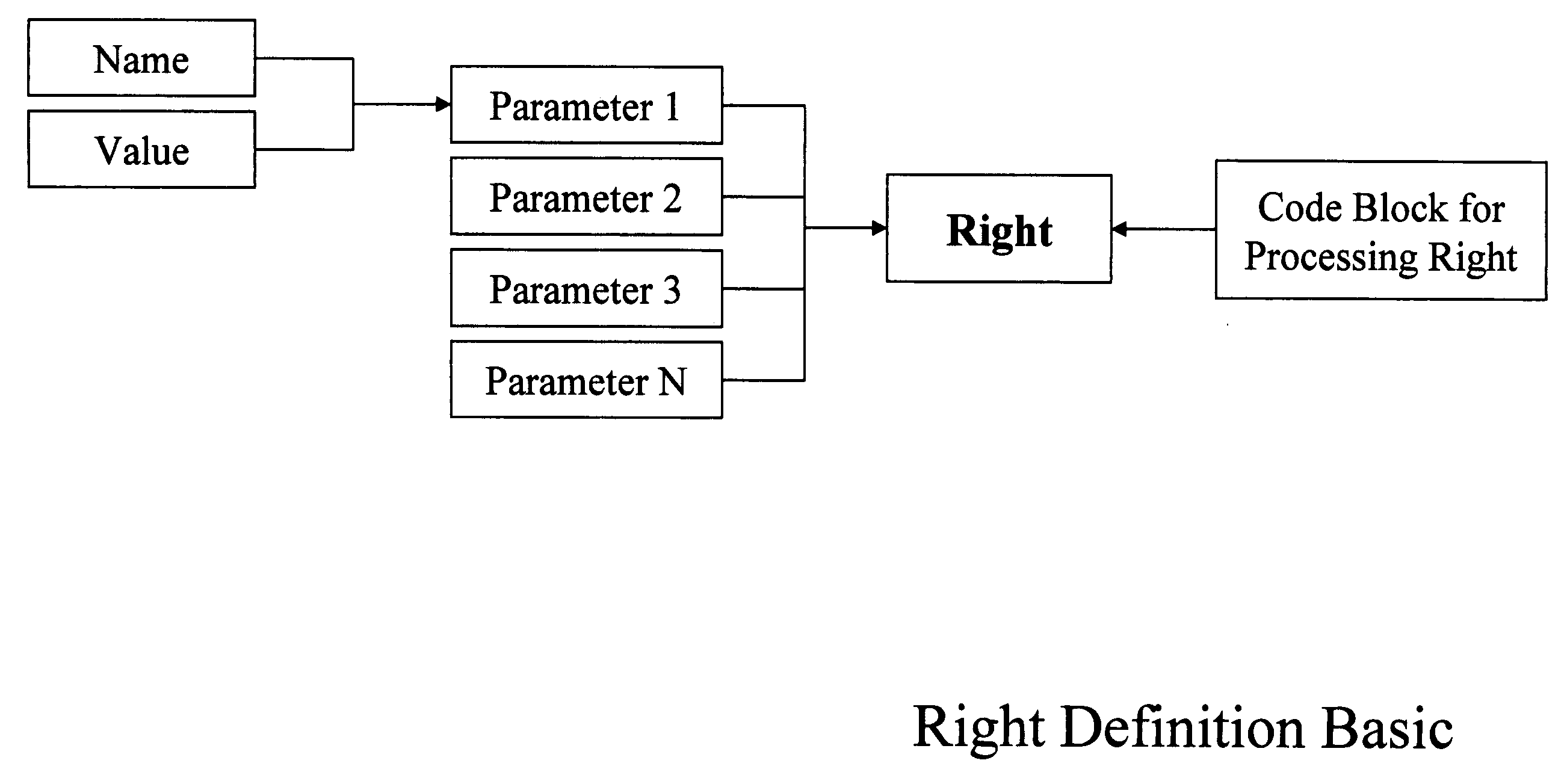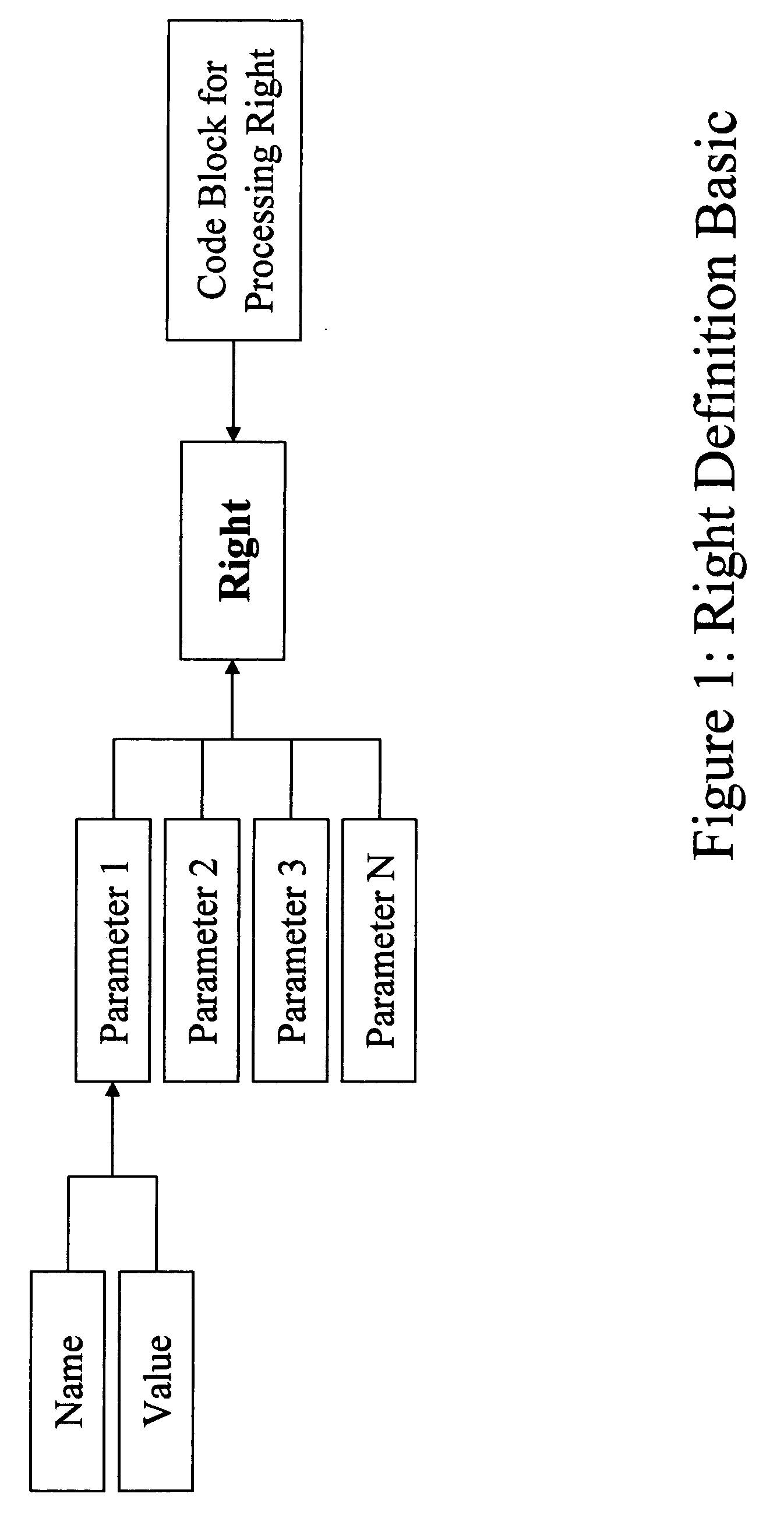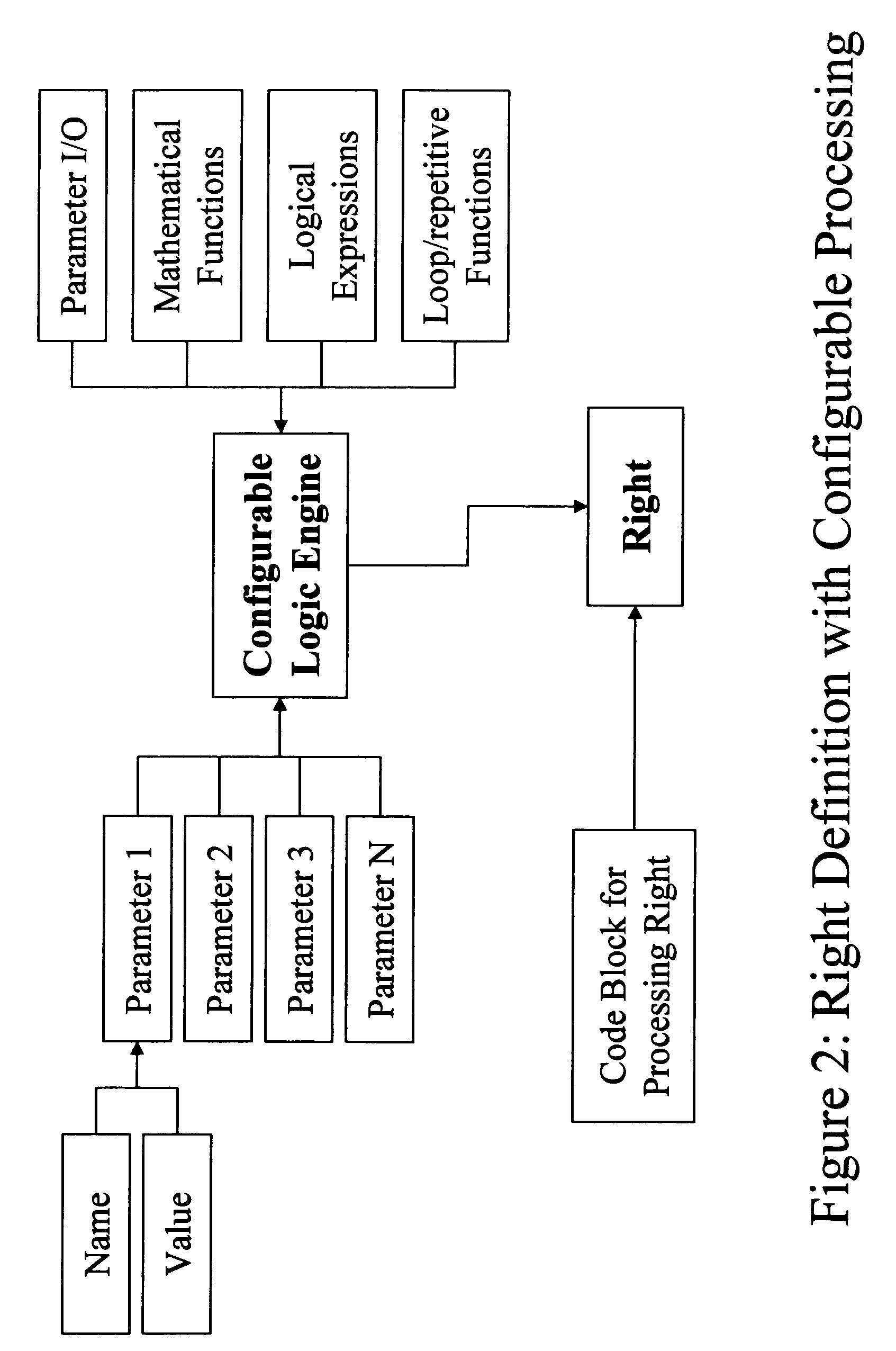Structured products based enterprise management system
a product management and product technology, applied in the field of information technology based systems, can solve the problems of inability to provide for complex processes or functions, inability to interoperate, and in the current electronic commerce world, and achieve the effect of reducing details and complexity, and ensuring the integrity of data
- Summary
- Abstract
- Description
- Claims
- Application Information
AI Technical Summary
Benefits of technology
Problems solved by technology
Method used
Image
Examples
Embodiment Construction
[0061]FIG. 1 is a flow diagram showing the basic elements of a Right. A Right represents an elemental function defined by the business. The Right has sufficient granularity to preclude the summation of business detail. Maintaining the Rights at this level of granularity allows for the Rights to form the basis of every system within the enterprise. If data were not stored at the finest granularity required by any system within the enterprise, business details would be lost during the processing. The loss of data would prevent the system from being able to “see” every aspect of the business. The only alternative to maintaining the data at the finest level of granularity would be to store the data in redundant databases in which, each is specialized for its specific business process. This approach would defeat the benefit of using the Rights based processing as the basis for the enterprise system.
[0062] There are many different types of Rights, including: scheduling, pricing, transpor...
PUM
 Login to View More
Login to View More Abstract
Description
Claims
Application Information
 Login to View More
Login to View More - R&D
- Intellectual Property
- Life Sciences
- Materials
- Tech Scout
- Unparalleled Data Quality
- Higher Quality Content
- 60% Fewer Hallucinations
Browse by: Latest US Patents, China's latest patents, Technical Efficacy Thesaurus, Application Domain, Technology Topic, Popular Technical Reports.
© 2025 PatSnap. All rights reserved.Legal|Privacy policy|Modern Slavery Act Transparency Statement|Sitemap|About US| Contact US: help@patsnap.com



